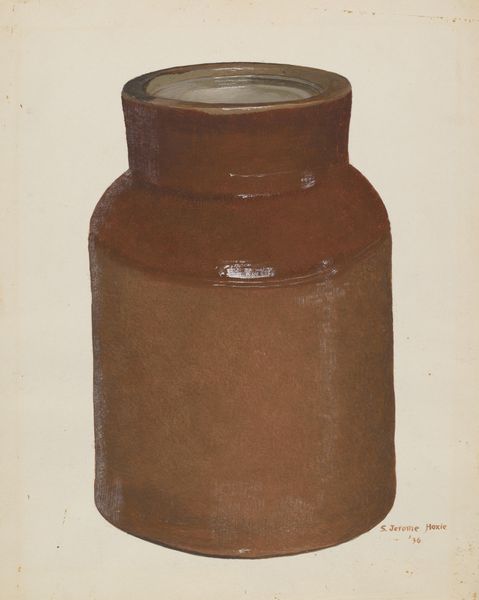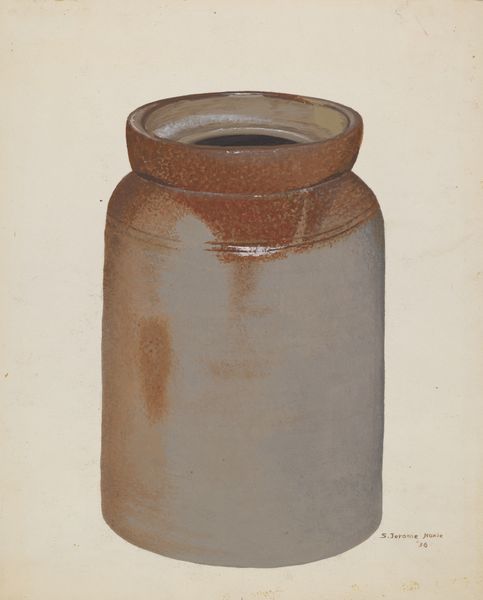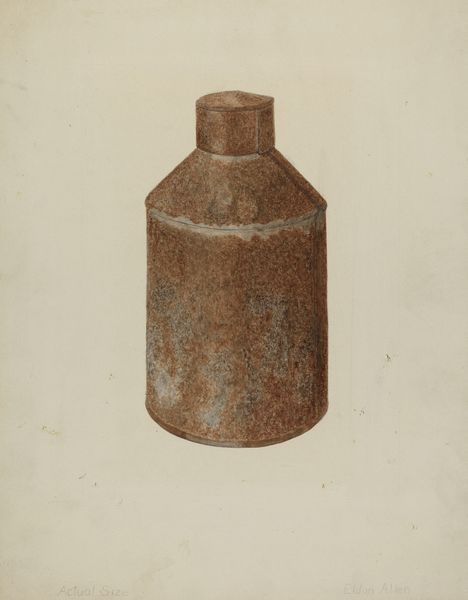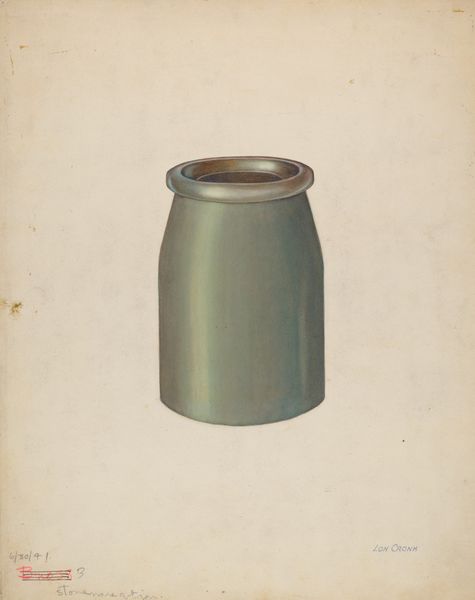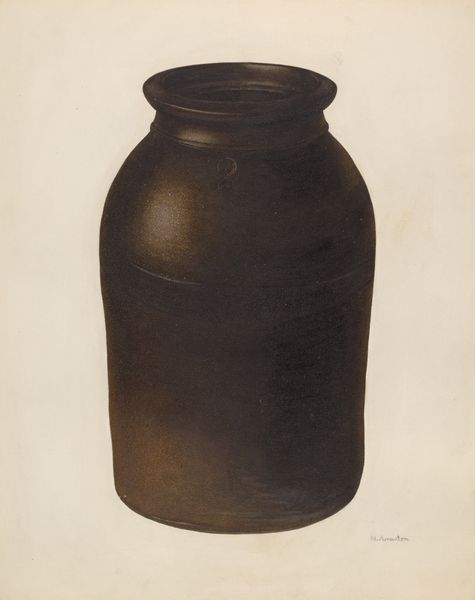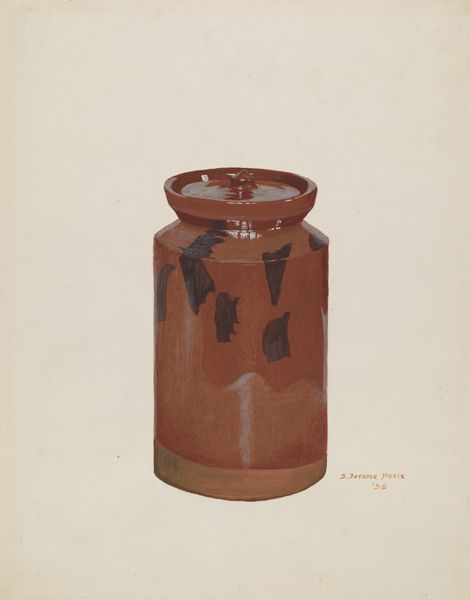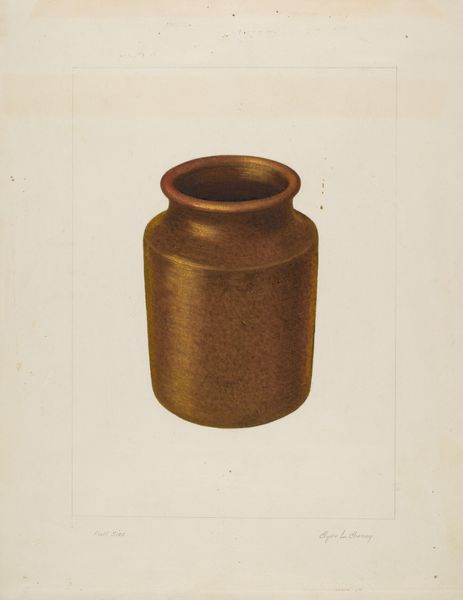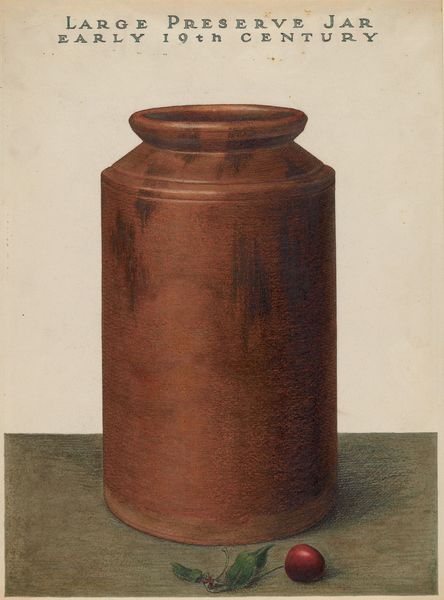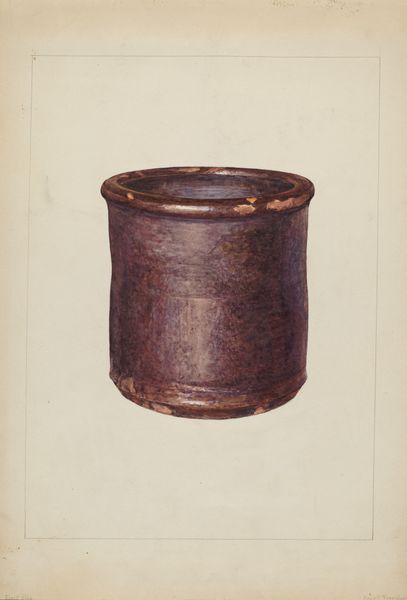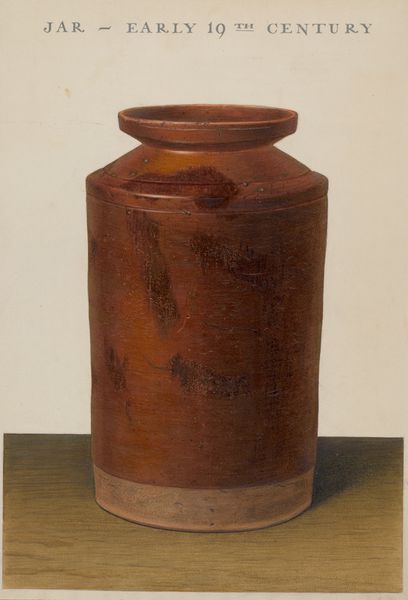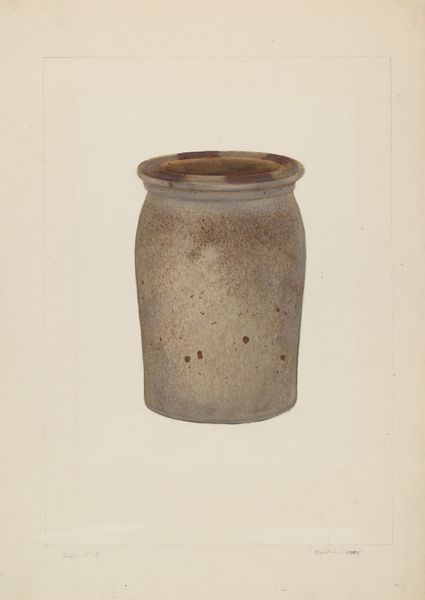
drawing, watercolor
#
drawing
#
watercolor
#
watercolor
#
realism
Dimensions: overall: 30.5 x 22.9 cm (12 x 9 in.) Original IAD Object: 6 3/4 High 7 3/4 High(w/cover) 4 3/4 Dia(base) 3 1/4 Dia(mouth)
Copyright: National Gallery of Art: CC0 1.0
Curator: Before us, we have Yolande Delasser's watercolor and drawing from around 1938, simply titled "Jar." Editor: My initial reaction is of a sunny kitchen still life, something quietly domestic yet hinting at stories untold. There’s a palpable warmth emanating from the aged, mellow yellow glaze. Curator: That "aged" quality speaks volumes. Everyday objects such as this one, especially during the interwar period, acquired a symbolic weight. They silently witnessed profound shifts in societal structure and domestic life, bearing the marks of both utility and quiet endurance through economic and social hardships. Editor: Exactly, think of what a simple jar could contain: preserves, maybe offering some stability during the great depression. And that ochre hue, repeated inside the rim and around the base, evokes the color of the earth, a very grounding visual note. Also notice the faint crackle effect on the surface. That network of lines makes me think of maps. Could the jar be a stand-in for broader geopolitical anxieties of the period, disguised within the domestic sphere? Curator: That’s a perceptive observation! Consider also Delasser's gender as a female artist working in the shadow of more celebrated male counterparts. Perhaps, by focusing on these oft-ignored items, she sought to elevate the narratives traditionally dismissed as insignificant to a worthy art-historical subject. This jar takes on a form of passive resistance to art-historical tradition. Editor: I like that idea, and in that case, the color choice is key as well, if it can stand in for harvests, growth, life cycles and nourishment. The simplicity in execution becomes meaningful itself—in a moment with big conflicts—an attempt to come back to simplicity, quiet, an embrace of everyday mundane tasks. Curator: Indeed. The "Jar" isn’t simply an exercise in realism but a cultural and social artifact of the past seen through a contemporary lens. By focusing on an object commonly seen as mundane, Delasser subtly prompts a re-evaluation of gender, artistic voice, and political reflection within everyday art during this specific interwar period. Editor: For me, the image continues to suggest endurance and hope, reflecting the beauty of humble utility as cultural memories captured in quiet, personal objects.
Comments
No comments
Be the first to comment and join the conversation on the ultimate creative platform.
